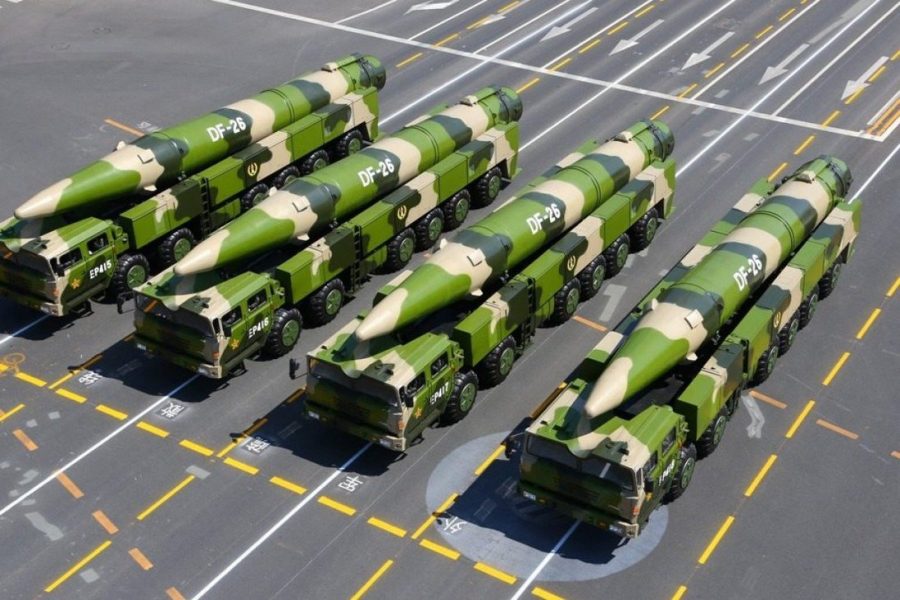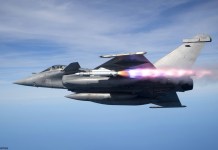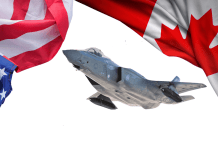Last month, Fraser Sampson, Britain’s Commissioner for Biometrics and Surveillance Cameras, wrote to Cabinet Minister Michael Gove to convey his concerns about the dominance of Chinese video surveillance equipment in Britain.
Will Australia’s “Manchurian PM” Go Soft On China & Wreak US Security Policies, Endangering QUAD & AUKUS?
He said he had “become increasingly concerned at the security risks presented by some state-controlled surveillance systems covering our public spaces.”
Two Chinese companies, Hikvision and Dahua, have grabbed a huge share of Britain’s CCTV market. While both, Hikvision, which has revenues of $9.3 billion, and Dahua, whose revenues are $3.7 billion, are private companies but they have major shareholders with ties to the Chinese Communist Party (CCP).
Also, Hikvision is known to be controlled by China Electronics Technology Group Ltd. (CETC), one of the major Chinese military-industrial groups, and is China’s largest electronics defense contractor. Under the Chinese Communist Party (CCP) regime, all military-industrial groups have to obey the orders of the regime.

Thousands Of Cameras In Britain
The UK-based campaign group Big Brother Watch sent 4,500 freedom of information (FoI) requests to public bodies asking whether they had Hikvision or Dahua cameras employed on their premises.
Of the 1,300 who responded, 800 confirmed that they did, including nearly three-quarters of councils, 60% of schools, half of NHS trusts and universities, and nearly a third of police forces.
Moreover, Big Brother Watch found that there are 164,000 Hikvision cameras and 14,000 Dahua cameras in public spaces apart from the government bodies.
Reports suggest that many of these cameras have advanced features such as microphones, the capacity for facial and gender recognition, and distinguishing between people of different racial groups.

Some cameras can also analyze behavior, such as detecting if a fight might be breaking out. Others can even judge moods, track via heat-sensing, and learn behavior patterns to highlight any unusual activity.
Backdoors Discovered In Chinese-Made Cameras
Serious security flaws have been detected in the past in cameras produced by both of these companies, which could be exploited to access images and data remotely and without the permission of their owners.
For example, last year, the Italian state broadcaster Rai revealed that data collected from a Hikvision camera installed on its premises was sent to a server in China — apparently due to a ‘glitch.’ Rai also revealed that 100 cameras at Rome’s main airport had tried to connect with unknown computers multiple times.
Also, in 2017, an anonymous researcher discovered major vulnerability across many Dahua products. The researcher found a backdoor that allowed remote unauthorized admin access via the web, and while Dahua said that it was an error (‘coding issue’) and not done intentionally, the researcher, based on his analysis, expressed skepticism over the “error claim.”

“All cameras have vulnerabilities,” says Conor Healy of US computer security website IPVM. “What makes some Chinese cameras different is that there are more security flaws. Chinese law requires that companies report vulnerabilities to the government within two days. The Chinese government could inevitably have the opportunity to make use of them.”
The US has already banned Hikvision and Dahua from selling surveillance equipment in the country. Last July, the Commons Foreign Affairs Committee demanded that the UK Government do the same.
Reports suggest the possibility that these cameras could be accessed remotely to spy on citizens, police stations, universities, and hospitals for valuable intelligence.
For example, the cameras can be used to monitor the comings and goings at government departments, where officials make important policy decisions related to foreign and security policy.
In-built microphones would even enable the conversations to be monitored.
Precision Missile Strikes Using Surveillance
In fact, in 2015, China gave examples of how surveillance technology can be used for military purposes when Li Yanxiang, a Hikvision engineer, wrote an article about his work with weapons experts from the General Armament Department of the Chinese People’s Liberation Army (PLA).
Li said that his work involved using surveillance technology to improve the accuracy of the missiles fired from surface-to-air systems, plus the surface-to-surface systems using both fixed and moving launchers.
“[We should] use the surveillance cameras to capture the moment when the missile reaches the target or misses the target, and collect the wind speed as well as the temperature and air humidity. Then we can calculate whether the angle of incidence is correct and in which angle the missile has the strongest force of penetration/lethality,” Li wrote.
Li said the surveillance system also needs to collect data on the land where the soldiers shoot the missile and where the target is, the radius of the explosion, and whether a missile is dumped.
Li then talked briefly about the surveillance system that Hikvision would supply.
“We need to use high-speed cameras, which can capture at least 200 to 500 frames per second. With a lot of the footage, we need to build a local memory server and power supply.”
This would mean that surveillance technology could be used for precision missile strikes over strategic locations such as important government centers or industrial areas, etc.
Also, earlier this month, Chinese researchers claimed to have developed a remote sensing satellite powered by the latest Artificial Intelligence (AI) technology that can be used to detect and “live stream” military activities of interest.
The researchers said that their AI-enabled satellite could automatically detect the movements and provide coordinates of the US Nimitz-class aircraft carrier, USS Harry S. Truman, during a live-fire drill off the coast of New York on June 7, 2021.
- Written by Tanmay Kadam/EurAsian Times Desk
- Contact the author at etdesk@eurasiantimes.com
- Follow EurAsian Times on Google News




